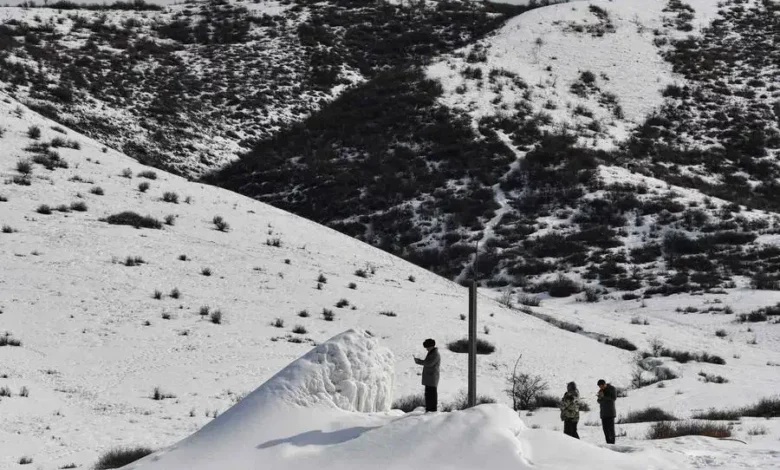
Kyrgyz farmers combat drought with artificial glaciers.
Farming communities in Kyrgyzstan’s Tian Shan mountains are using artificial glaciers to tackle worsening drought. With natural glaciers retreating rapidly due to climate change, residents of Syn-Tash district have constructed ice hillocks that will melt and provide water for their arid lands and livestock.
Standing beside the five-metre-high structure, Erkinbek Kaldanov reflects on the impacts of recent hot spells on his sheep. “We won’t have any more problems with water,” he says, relieved to have a solution.
When the artificial glacier melts, it will sufficiently irrigate pastures and farmland.
Over two weeks last autumn, villagers channelled mountain streams over 4,000 meters high towards the structure. It now measures 20 meters long, down from an initial 12 meters owing to melting over winter.
According to a 2023 Science study, the initiative aims to adapt as glaciers that historically fed the region decrease alarmingly.
Lower precipitation compounds the water crisis. “There is less water yearly,” says Aidos Yzmanaliyev, a local farmer representative.
Depleting reserves endanger the area’s mainstay – agriculture, which accounts for 10% of Kyrgyzstan’s economy. Previous droughts have inflamed unrest.
District head Maksat Dzholdoshev stresses that the priority is sustaining the livestock on which most 8,400 residents rely. Two more artificial glaciers are planned for crops.
Costing $6,200 each, the simple method involves piping water to freeze before irrigating land when melted.
The glaciers also aid vegetation through lowered temperatures and moisture. Originally developed in India and now worldwide, over 20 now dot Kyrgyzstan, thanks to Abdilmalik Egemberdiyev, head of the herders’ association. They help protect fragile mountain soils under a changing climate.



